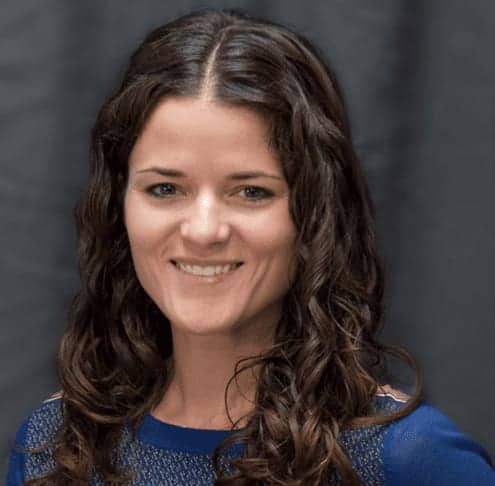11 min read
A Guide to Google’s Broad Match Type Change – What You Need to Know Now – And In The Future
Amy McClain : Feb 26, 2021

5 Actions to Take Now To Turn Google’s Broad Match Modifier Change To Your Advantage
Google’s recent announcement
As you may have heard by now, Google recently announced an update to their current match type targeting which will reduce the number of keyword match types available to advertisers. These updates can have a significant impact on your campaign performance if not managed correctly, so it is important to be prepared.But, before we get into the tactical details of this most recent change, why this change is significant outside of its immediate impact is a question the informed marketer should be asking themselves or their agency.
Why is it important to understand Google Ads match types change?
At BCM, we believe it is important for our clients to understand why Google is making this change and how Google’s approach will impact their paid search marketing campaigns moving forward, beyond just this immediate update. For this is very much a forest and trees situation and the most recent changes being rolled out by Google portend a paid search future that is very different from its past that is easy to miss if one is not focusing correctly on what matters.
We believe that marketers that can understand the larger trend, stand to gain an advantage as the landscape changes significantly and previous tactics cease being as effective. So, read on to learn not only how you can protect your campaigns today but also how you can prepare them for tomorrow.
What is the Exact Change Google is Making?
Current keyword match types
The current keyword match types that Google allows users to bid on are the following:
- Exact Match
- Phrase Match
- Broad Match Modifier, and
- Broad Match
These match types are used to broaden or narrow the targeting of a particular ad, from the very narrowly targeted Exact Match to the much broader and aptly named Broad Match.
Schedule of Google’s Changes
Starting in mid-February 2021, Google will begin to phase out the Broad Match Modifier (BMM) match type. Any keywords with a BMM match type, will now be considered Phrase Match terms and be treated accordingly.
In July, no more BMM keywords can be added to an account and match types will be reduced from four targeting variables for matching to three (Exact, Phrase, Broad), effectively eliminating the Broad Match Modified match type.

In addition to eliminating the Broad Match Modified match type, the Phrase match type will see some significant changes in the types of queries it will now be matched to. In the past, words within a phrase match keyword had to stay together, in the same word order, in order to be matched to a particular query. So, for example, a Phrase Match term like “red boys pants” would be matched to “large red boys pants” but not to “red corduroy boys pants”.
Another significant change is that additional words can be inserted within the targeted phrase if Google deems them to be relevant to the user’s intent. So, in the new scenario as outlined above, the phrase “red boys pants” on Phrase Match will also match to “red boys corduroy pants” as well as many other variations. One can see how this might be problematic if one is a seller of red jeans but not red corduroys.
Essentially, these changes are combining elements of broad match modifier into the new expanded phrase match type. The diagram below demonstrates how the targeting will be broadened.

More Importantly, Why is Google Making these Changes?
Google Ads API Change History
Over the last few years, Google Ads API has slowly changed to reduce advertisers’ control over exactly how and when their ads appear. This most recent change is no different and is part of a longer, more important trend toward a less keyword centric future.
The first keyword match type changes started in 2014 when Google disallowed advertisers from excluding their exact match keywords from showing for close variants.
The changes to Google Ads match types have continued throughout the years, with the last change in 2019 when Google expanded matching to semantic equivalent queries for phrase and broad match keywords.
The net effect of these changes has been that advertisers have had to work harder in some cases to maintain more narrowly targeted matching. And to some degree, this effort was justified with exact match types typically outperforming their more broadly-matched counterparts.

Moving beyond the keyword
There is no doubt that using a user’s search keyword as a targeting variable was a key innovation in digital marketing, and one that ushered in much more relevant advertising. But the keyword has its limits, and nobody is more keenly aware of those limits than Google.
Sometimes, a keyword alone lacks context that is important and not included in the user’s query language. For example, if I enter “hotels near Phoenix”, Google can layer on what they know about me – and they know a lot – to make the results more relevant (and useful) for me.
So, if I am at home in my living room and Google knows I have been searching for spas, they may choose to show me spa resorts, whereas if Google knows I am speeding down the highway late at night, they may direct me to a hotel right off the highway and include a map. In both examples, Google is using what they know about me to make my search results more useful and relevant.
From Google’s perspective, they are simply fulfilling their stated corporate mission to “…organize the world’s information and make it universally accessible and useful”.
Search ad inventory is not growing
In addition to fulfilling its stated mission, Google’s also obligated to shareholders and to continuing revenue growth while also satisfying advertiser demand for more search inventory. This is not as easy as it used to be with search inventory growth slowing while, simultaneously, advertiser demand for it is growing.
It is important to qualify the statement that “search inventory isn’t growing”. To be fair, there are more aggregate searches being conducted due to things like voice, mobile, and image searching, but fewer of these searches are resulting in website referrals (i.e. clicks to a website or app), which is what Google’s advertisers are typically willing to pay for and what we are considering paid search inventory.
The fact of the matter is, however, that search ad inventory has not been growing as rapidly as overall search activity due to things like zero-click results, in which the search results answer the user’s need/question so there is no click off of Google.com.

Source: SparkToro/Jumpshot, March 2020
Simple examples of zero-click searches are things like Weather and Currency rate exchanges. One no longer needs to click over to Weather.com or XE.com to get the answers -they are presented right on the Google search results page. “Zero click” results have expanded significantly over the past few years and now make up about half of all search results.

In this case, the answer is provided on the search engine results page – no need to click away

In the following example, the answer is provided in the search itself – no need to even complete the search or reach the search engine results page.
The Future is Now
In addition to the keyword match type changes being rolled out, Google has introduced changes to their ad formats as well, with things like Responsive Search Ads in 2018.
AI-driven Advertising
Responsive Search Ads (or RSAs) let Google show an advertiser’s headlines and descriptions in whichever combination Google’s machine learning decides is most relevant to the user/query.

Optmyzr research on 5,606 Google Ads accounts from November 2020 shows the indexed performance of responsive search ads versus expanded text ads.
Based on our own internal analysis, and others in the industry, we have seen RSAs generally outperform the traditional Expanded Text Ad format when set up and managed correctly. If your campaign is not using RSAs or is not using them effectively, you are definitely missing out on performance opportunities.
The superior performance of RSAs is not entirely surprising since the system is using artificial intelligence based on machine learning from millions of ads and data points about the individual doing the searching to deliver the most relevant ad (and the one most likely to get a click, sale, or lead from a probability standpoint). At BCM, we like probabilities. Especially when we are on the right side of them!
In Google we Trust?
These types of changes to ad and match types are a continuation of Google taking control away from advertisers and forcing them to trust Google’s machine learning and data-based intent signals. In some cases, these changes have been good – getting rid of misspellings and including semantic equivalents has in many cases made our accounts cleaner and easier to manage without impacting performance or impacting it in only a positive direction.
In other cases, we’ve seen instances where this increased lack of control has been detrimental to campaign performance. By broadening the scope of queries for each match type – keyword order can be switched around, which can give the query a completely different meaning.

These changes also have the (intended?)  effect of broadening the number of participants in any given ad auction. By broadening the eligible base of advertisers (bidders) in an auction, the price of the winning bid will be increased (and Google’s stock price along with it). This is why we have seen some of the steepest price inflation on long-tail terms as Google has increased the number of bidders now considered eligible on these less searched, and typically less-targeted terms.
effect of broadening the number of participants in any given ad auction. By broadening the eligible base of advertisers (bidders) in an auction, the price of the winning bid will be increased (and Google’s stock price along with it). This is why we have seen some of the steepest price inflation on long-tail terms as Google has increased the number of bidders now considered eligible on these less searched, and typically less-targeted terms.
So, longtail terms like “18 wheeler accident lawyer san antonio” now go for as much as $670 per click.
Machine vs Machine
One development to combat the downside of some of these trends has been the use of sophisticated Artificial Intelligence (AI) software to identify instances where an advertiser is being matched inappropriately to a targeted term. BCM uses these types of solutions to reduce waste and identify new areas of opportunity by analyzing Google’s search term report, a report that shows the targeted keyword but also the actual query that it was matched to.
Unfortunately, Google has made some significant changes in this area as well, with their recent announcement that they will be limiting the information shared in their search term report, which will make it harder for advertisers to use it to filter out unwanted queries.
The cynic among us might believe that some of these changes are being made because the AI-enabled strategies that advertisers like BCM use are successful in cherry-picking Google’s ad inventory and selecting only the most relevant (and valuable) queries. Google is citing user privacy as the reason, which seems like a canard given that no PII is available with any of the data in its current form, and Google will continue to share much of the data in the exact same format….but just not all of it, which is what one needs to be really effective at cherry-picking inventory.
Taken together, changes to Adwords match types, and the data being shared are part of the same trendline that leads to a future in which the keyword will become just one element of how, why, and where an ad is delivered and it may not always be the most important one – or even used at all in some cases.
Searching without Keywords…or Even Queries?
These changes and others like them are ushering in an era of “keyword-less” search and more automated and algorithmic-based targeting that will allow Google to effectively expand their ad inventory to keep up with demand, to better serve the expanding needs of its users, and to ensure continued strong performance for advertisers – many of whom are currently having trouble scaling their campaigns.
Scaling campaigns while maintaining performance is a common challenge for advertisers that have mature, high volume paid search accounts. How do you grow when you are at 90%+ impression share on all of the “relevant” terms in your industry? By expanding the definition of what a relevant term is, that is how.
So, in reality, the future of paid search is already here. Google Shopping and Dynamic Search Ads are basically keywordless search already, where advertisers bid on categories or parts of their landing pages which Google maps to search queries. No keywords required.
Increasingly, the opportunities for “anticipated search” will also become part of the landscape as well and are already here in some forms. From Google’s perspective, the ideal search is perhaps the one that never happens. With products like Google Assistant and other developments, the vision is to deliver the answer before the question is even asked.

Example of Google Assistant, a voice search digital assistant, providing additional, proactive information about flight delays.
How will the change affect my paid search campaigns today?
The immediate impacts are likely to be minimal if your campaigns are structured correctly and your keyword match types are already well defined and broken out into separate campaigns/ad groups, but it is hard to tell until one sees exactly how broadly Google is interpreting the new matching framework.
If you currently use Broad Match Modifier targeting, it is probably capturing more queries today than a similarly targeted Phrase Match term would so it is possible that traffic levels may drop for BMM groups as changes are rolled out over the next few weeks.
Be sure you or your agency is monitoring your campaigns using automated alerts to flag any irregularities and anomalies that might occur so you can identify them early and take the appropriate action. Monitoring the new matching rules for changes in the performance will help you identify whether you will need to break out terms or re-assign match types in order to maintain your performance.
5 Keys to Turn Google’s New Match Type Change To Your Advantage
1. Make Sure to Closely Monitor Your Search Term Report
If you are not already actively and aggressively monitoring your search term reports using automation you are already behind. But, there is no time like the present to engage in good habits, so you had better start doing it now in light of these most recent changes. Yes, Google has made the Search Term report less transparent, but to date, it is still useful. As these new match type changes roll out, it is likely that unintended keyword matches are part of the reality. If you’re using only phrase match types now, expect a leap in the number of matching queries (including irrelevant ones). . If you’re currently using only broad match modifier match types, you may see a decrease in volume. In order to make sure you stay up to date with the search queries during the change, try using automation like the Google Ads Search Query script or other tools that can help you identify low performing queries.
2. Don’t Rely on Broad Match Modifier (BMM)

Broad match modifier (BMM) is going away. If you are currently using a broad match modifier based strategy, make sure to capitalize on any learnings before it’s completely gone! Carefully analyze your search query reports for the few weeks before the change and add any relevant queries that have higher volume and good performance as new phrase or exact terms. With the new change, you might not show for these queries anymore.
3. Embrace Automation & AI
The fact is, we are moving away from granular advertiser control to a paid search world in which the machines are often deciding when, where, and how much to bid. Many search agencies have been fighting some of the early changes – including BCM – but the tide is turning. If you haven’t embraced things like automation, artificial intelligence, and machine learning solutions, now is the time.

Google’s Smart Bidding is a great place to start. As Google makes more innovations in machine learning and takes control away from the advertiser, it’s important to learn how these kinds of changes may impact your campaigns. It’s better to gather as much experience in this area as possible before the change is mandated and you are forced to scramble when Google takes even more options away.
4. Focus on Audiences (aka Customer > Keyword)
The biggest change is that more data is being combined with the keyword to create an audience segment that Google’s algorithm believes will be highly receptive to a particular ad. Some of this is Google’s own data – your previous search and browsing history, your device, your location, etc. But some of it is also going to have to be the advertisers’ own data, particularly if we want to be unique and or more relevant than our competitors, who will also be relying on Google’s data. What can we tell Google about our ideal customer that Google does not already know and that will differentiate us, positively, from the pack?

While the keyword is not going away, the focus has begun to be placed more squarely on the user – the person inputting the search query. As noted, Google has realized that the query often does not tell the whole story. As search continues to evolve, the focus will be increasingly on using more audience-based strategies and working to align these with Google’s algorithmic decision making.
First-party data is critical, but fully utilizing Google’s available audience targeting variables are also important. If you are not already actively using audience data to refine and expand your paid search campaigns, you should be. Our experience here has proven very successful for our clients across a range of industries.
5. Build and Activate First-Party Data
If third-party data in the form of the cookie has been the coin of the realm for digital advertising over the last twenty years, first-party data is the new currency. Advertisers that have robust first-party data assets are going to be able to feed Google algorithms (and Facebook’s, and Amazon’s…..) information in a way that ensures greater effectiveness and relevancy as Google expands targeting beyond the simple keyword match types.
There will be, and already are, expanding opportunities for “keywordless” search, like dynamic search ads (DSAs) in which Google crawls your website or product feed and matches to different audience segments with queries that it believes are relevant – no keywords required. We have found that these tactics can be most effective when combined with robust audience data.
Looking Forward
In summary, this change is important not because it is the end of paid search as we know it, but rather because of the larger trend it signifies. In other words, it is not going to completely change the way we optimize our campaigns today, but it very likely will tomorrow.
The truth is that these kinds of changes – ones that lessen advertiser control based on the keyword – are not going away. In fact, they will likely increase if we believe what Google has to say on the matter.

Advertisers should be looking at their approach holistically and ensure that they are set up to take advantage of the coming era in paid search marketing and are not relying on an antiquated strategy.
Advertisers need to prepare to “lean into the algorithms” so-to-speak rather than trying to play a cat and mouse game with Google (hint: you will lose in the long run). Our experience in embracing things like automation, machine learning, and AI has shown us that these are definitely beneficial in the long run and perhaps has us less alarmed than others might be. But, either way, the changes are coming, so it is best to be prepared.
Not sure if you are prepared for the coming Google changes? Have BCM conduct a simple audit to find out.

Stuart Meyler, Co-Founder, Principal

Amy McClain, Group Director, Performance Media
How to Up Your Audience Targeting Game With Google Customer Match
Last month, Google released a new type of audience targeting that allows advertisers to upload their own CRM data. Customer Match allows advertisers...
New Year’s Resolutions for Paid Search Marketing
From Google’s SERP changes to new offerings from Bing and Yahoo, 2014 has been a huge year for changes in paid search marketing, and the trend will...

